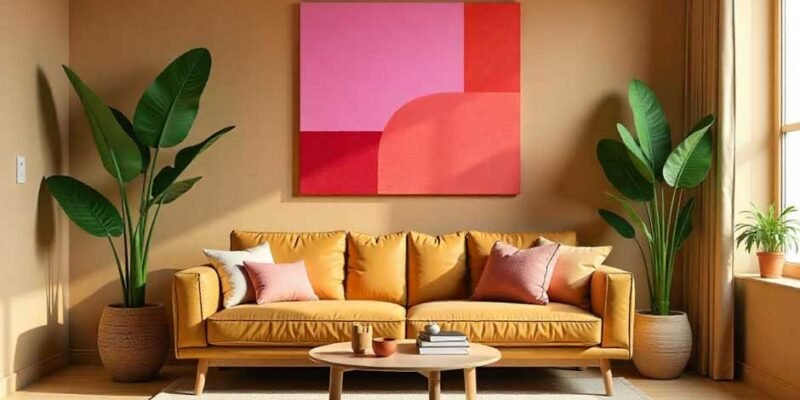
The Power of 3D Furniture Visualization: A Game-Changer for Retailers and Shoppers
In today’s fast-paced, technology-driven world, the process of shopping for and designing furniture has been completely transformed. Gone are the days of flipping through static catalog pages or relying solely on showroom visits. The rise of 3D furniture visualization has empowered consumers and designers alike, providing dynamic, interactive, and highly customizable solutions for furniture shopping and interior design. This article delves into the key aspects of 3D furniture visualization, its advantages, applications, and how it is reshaping the industry.
What is 3D Furniture Visualization?
3D furniture visualization is a cutting-edge technology that uses 3D modeling, rendering, and interactive tools to create lifelike digital representations of furniture pieces. Unlike traditional 2D images or photographs, these digital models allow users to view furniture from multiple angles, zoom in on details, and even place them in virtual spaces. This technology bridges the gap between imagination and reality, providing a near-tangible experience of interacting with furniture without physically being present.
Key Features of 3D Furniture Visualization
-
Realism
Modern 3D visualization tools deliver near-photorealistic quality. From the texture of fabric to the grain of wood, these tools mimic real-world materials with astonishing accuracy. Advanced rendering techniques incorporate lighting, shadows, and even reflections to create a highly realistic representation.
-
Interactivity
One of the most appealing aspects of 3D visualization is its interactivity. Users can rotate furniture models, zoom in on intricate details, and explore how a piece looks from various perspectives. Many platforms also allow for customization of colors, materials, and finishes in real-time.
-
Augmented Reality (AR) Integration
AR technology has taken 3D visualization to the next level. With AR, users can project furniture into their own spaces using a smartphone or tablet. This feature allows them to see how a sofa or dining table fits within a room, helping them make informed decisions about size and style.
-
Customization Options
Whether choosing upholstery fabrics or altering dimensions, 3D tools make customization seamless. This capability is especially beneficial for customers seeking unique, made-to-order furniture that aligns with their specific needs.
The Benefits of 3D Furniture Visualization
The impact of 3D furniture visualization extends beyond mere convenience. It provides tangible benefits for consumers, retailers, and interior designers, revolutionizing how top quality used office furniture is designed, sold, and purchased.
-
Enhanced Decision-Making
One of the most significant pain points for customers is visualizing how a piece of furniture will look and feel in their homes. Static images often fail to convey accurate proportions, colors, or textures. 3D visualization eliminates this uncertainty, giving consumers a clear understanding of how a product fits their aesthetic and spatial requirements.
-
Cost and Time Efficiency
For retailers, 3D visualization reduces dependency on physical showrooms. It cuts costs associated with storing, transporting, and displaying large furniture inventories. For consumers, it eliminates the need for multiple showroom visits, saving valuable time.
-
Increased Customization
Every home is unique, and 3D visualization caters to this individuality. Customers can experiment with countless combinations of colors, finishes, and materials without additional production costs. This flexibility empowers consumers to personalize their furniture to suit their tastes.
-
Eco-Friendly Approach
By reducing the need for physical prototypes and extensive showroom spaces, 3D visualization supports sustainable practices. It minimizes waste and lowers the carbon footprint associated with traditional furniture manufacturing and retail.
-
Improved E-Commerce Experience
E-commerce platforms offering 3D visualization tools often see higher conversion rates. When customers can thoroughly examine and customize a product online, they gain confidence in their purchase, leading to fewer returns and higher satisfaction.
Applications of 3D Furniture Visualization
-
E-Commerce Platforms
Online furniture retailers like Wayfair and IKEA have integrated 3D visualization tools into their websites and apps. These features allow users to interact with products virtually, fostering trust and engagement.
-
Interior Design
Professional interior designers rely on 3D tools to create comprehensive visualizations for clients. By rendering entire rooms with chosen furniture pieces, they can present a realistic preview of how the finished space will look.
-
Furniture Manufacturing
Manufacturers use 3D models to test and refine designs before production. This process streamlines prototyping, reduces material waste, and accelerates time-to-market.
-
Showroom Augmentation
Some retailers are blending physical and virtual experiences by equipping showrooms with AR and VR technologies. Customers can try out furniture in a virtual setting while visiting a store, merging the best of both worlds.
How 3D Visualization is Reshaping the Industry
The furniture industry, traditionally reliant on tactile experiences, has embraced 3D visualization as a transformative force. This technology is reshaping consumer expectations, compelling brands to innovate and adapt. Below are a few key trends:
-
Rise of Virtual Showrooms
Virtual showrooms are becoming a staple for furniture brands. These online spaces provide an immersive shopping experience, allowing customers to browse entire collections without leaving their homes.
-
Personalization as a Standard
Customization is no longer a luxury but a necessity. Brands offering 3D tools for personalized furniture are gaining a competitive edge by meeting the demand for unique and tailored solutions.
-
Collaboration with Emerging Technologies
3D furniture visualization is often paired with AI and machine learning to enhance user experiences. AI-driven tools can recommend furniture based on a user’s preferences or suggest complementary items, streamlining the shopping process.
-
Global Reach
With 3D visualization, brands can cater to international audiences without physical expansion. Customers worldwide can explore and purchase furniture as if they were visiting a local store, breaking down geographical barriers.
Challenges in 3D Furniture Visualization
While the benefits are vast, implementing 3D visualization is not without challenges. High-quality 3D models require significant time and resources to create. Smaller retailers may struggle with the cost of integrating this technology. Additionally, ensuring that the digital representation matches the physical product is crucial to maintaining customer trust.
Another challenge is the accessibility of AR and VR technologies. While smartphones have made AR more mainstream, not all consumers are comfortable using these tools, particularly older demographics.
The Future of 3D Furniture Visualization
As technology continues to evolve, the future of 3D furniture visualization looks promising. Advancements in AI, AR, and VR will further enhance realism, interactivity, and accessibility. In the coming years, we can expect fully immersive virtual reality showrooms, AI-powered design recommendations, and even haptic feedback to simulate touch in virtual environments.
Furthermore, the integration of blockchain could allow for detailed tracking of customization options, ensuring transparency and authenticity in high-end furniture purchases.
Conclusion
3D furniture visualization is more than just a trend; it is a transformative force shaping the future of the furniture industry. By bridging the gap between the physical and digital realms, this technology empowers consumers, streamlines processes for businesses, and elevates the interior design experience. As it becomes increasingly sophisticated and accessible, 3D furniture visualization will undoubtedly become an indispensable tool in how we design and furnish our homes.






